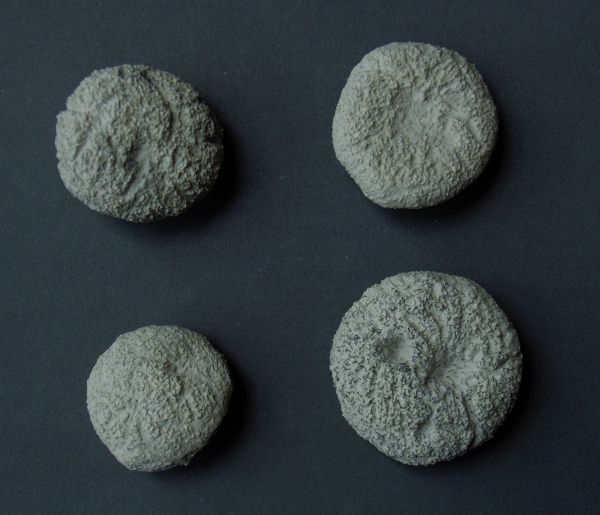
Plinthosella squamosa
Zittel 1878
Plinthosella squamosa is a common, but small, more or less nodular species, generally only a few centimeters in size. It has no real root and shows one or more depressions with an osculum, surrounded by deep radial furrows.
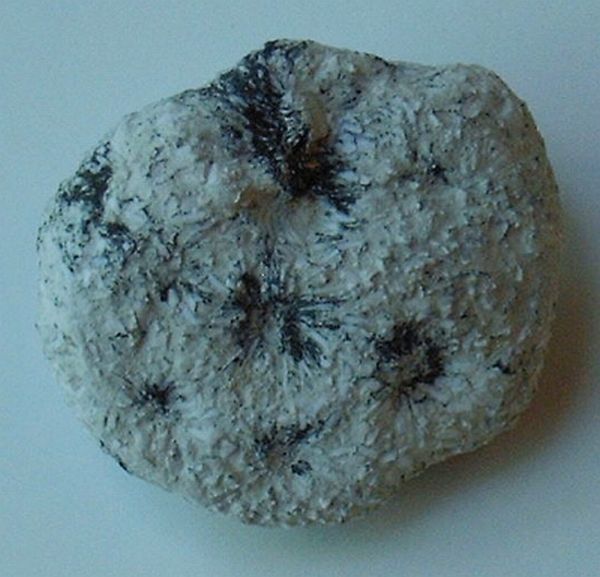
Very rarely, Plinthosella squamosa is found with its dermal layer completely preserved (image). In this case a particular type of elongate, curved, tounge-shaped plates several millimeters long cover the walls of the osculi in a radial arrangement (cf. photomicrographs below).
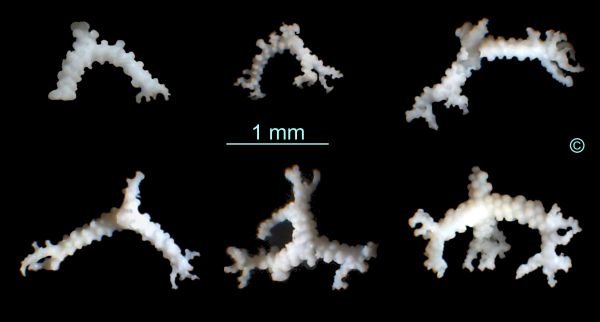
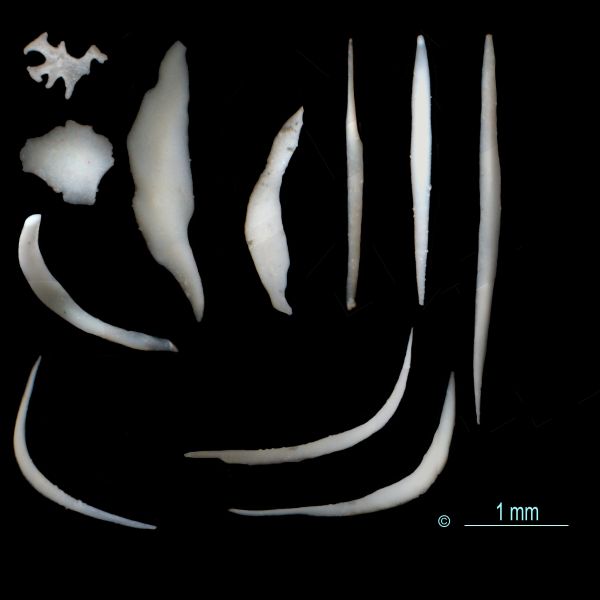
Plinthosella squamosa has a rigid skeleton made up of heavily warted, articulated tetraclone desmas. Typically, only threee of the four arms of the tetraclone are fully developped and show strongly branching ends. The fourth arm is reduced to a short, warted process.
Dermal scleres exist in several types:
(a) small jagged platelets, similar to phyllotriaenes (but without rhabdomes)
(b) platelets of irregular outline, isometric to elongate
(c) elongate, toungue-shaped, bent, thin platelets with smooth outlines and pointed ends, several mm long
All dermal platelets of Plinthosella show lensoid (eye-shaped) cross sections which are diagnostic. The scleres are very similar, but on average probably larger than those of Pycnodesma globosa. Plinthosella may also be confused with Spongodiscus radiatus which has a similar set of spicules.
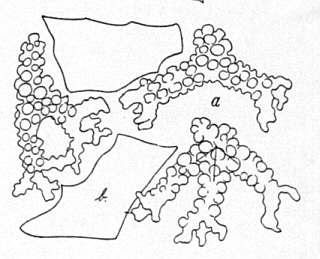
Scleres of Plinthosella squamosa as sketched by Schrammen (1910).
-
(a) modified (one clad missing) tetraclones with knobby surface
-
(b) siliceous platelets of covering layer
The outline of the siliceous platelets sketched by Schrammen suggest that they are probably only fragments of larger plates (as shown in the picture above).
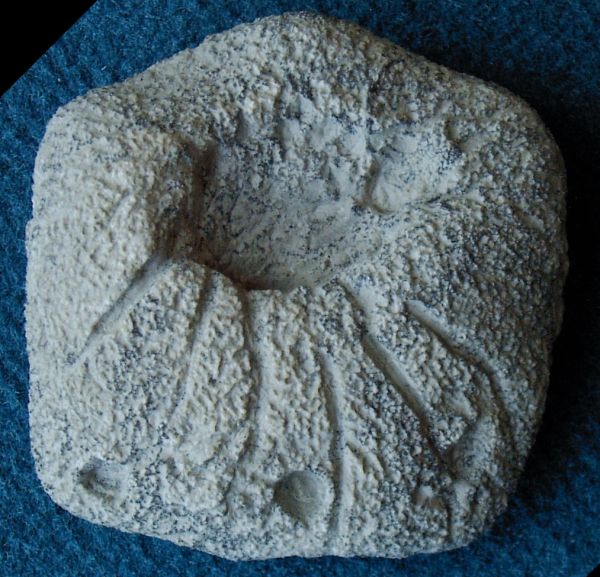
Plinthosella gleba
Schrammen 1924
Plinthosella gleba is larger and much less common than Plinthosella squamosa, but differs little in other respects. Typically, its base is flat or hemispherical, while its summit is rough and irregular, with pronounced, anastomosing grooves.
The specimen in the picture has a large, shallow depression (paragaster ?) plus three circular osculi (?) on the side of the sponge.